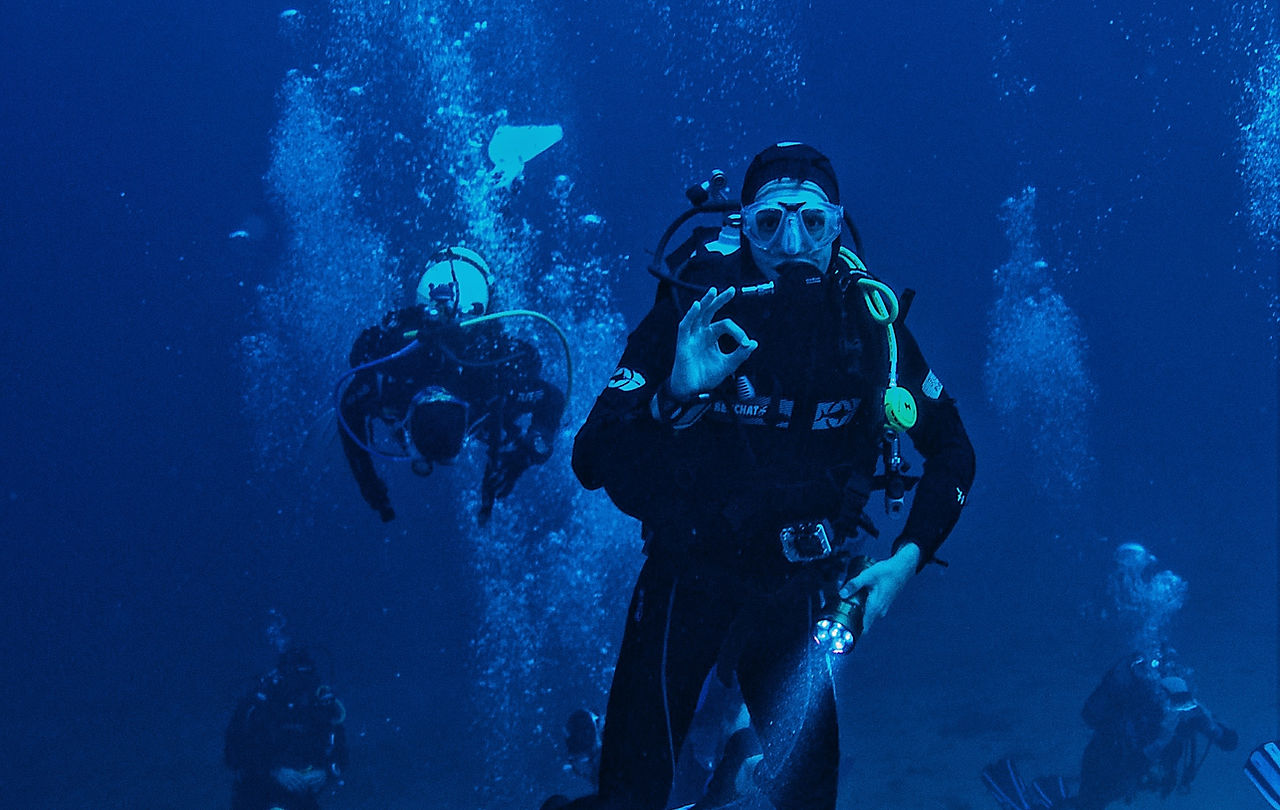
PADI Open Water
Have you experienced PADI Discover Scuba Diving and decided to continue?
Or you already know that scuba diving is the sport you want to practice?
Good! PADI Open Water course is your way to become a certified diver!
BENEFITS
1. This is a comprehensive course that prepares you to become a certified diver, and subsequently dive anywhere in the world, to a maximum depth of 18 meters (or within the limitation of local regulations).
2. A relatively simple course to complete. There are some theory and basic physical principles but nothing complex.
3. A reasonable cost given that you will only need to complete this certification once, keep it for life, with no annual subscription fee to pay. The price varies depending on the country and the school.
WHAT WILL YOU DISCOVER?
After a welcome message and coffee (remember, the aperitif is after the dive, not before), your instructor will explain the following.
A. Knowledge Development: Principles and concepts you need to know in order to dive safely.
B. Confined Water Dives: Pool exercises.
C. Open Water Dives: Apply and demonstrate the skills acquired during four dives at sea.
WHAT TO EXPECT?
The PADI OpenWater will take 3 days to complete. The first day is primarily focused on education and trials in swimming pools. The second and third day will be the actual diving days.
Day 1: In the morning, it will be focused on understanding how diving works. Your course includes a few hours in class and your instructor will explain the elementary basics of the equipment, such as the Buoyancy Control Device (BCD) as well as some principles of physics including pressure and decompression. You will be required to take a test, please take it seriously. Taking and passing both theory and underwater test are the main differences between the PADI Discover Scuba Diving and Padi Open Water. The information is critical to ensure your safety underwater.
In the afternoon, you will move to the pool for some exercises. Your instructor will help you set up your equipment. In the pool, you will perform a few exercises such as breathing using your regulator, recover your regulator if you lose it underwater and empty your mask. These are basic skills that you must learn to ensure your safety underwater! You should also be able to float in the water comfortably, and avoid sinking or unintentionally shooting up to the surface.
Day 2: After passing your theory test and the pool exercise, you are ready to get down to business - head to the ocean! For most, being able to dive in the ocean is amazing but to some, it might be worrying. If you understood the theory and follow it, you do not have much to worry. However, I do recommend the seasickness pills if you are not sure how you might react on the boat.
Depending on the diving centre or school and where you are, your dive will take place either from the beach adjacent to the school (a "beach dive" in the jargon) or you will take a boat to go to a dive site directly. Before departure or during the boat ride, your instructor will remind you of the safety rules including what you will be doing, what you will be seeing, hand signals when you are in the water, the topography of the place etc. At this point, feel free to ask him as many questions as possible!
Once you reach the dive spot, you will be given instructions to get equipped before jumping into the water. Your first descent will be done using a reference line (a rope). As a beginner, you should not explore alone, regardless how tempting it might be. You should always have visual on your dive instructor, and descend at an appropriate speed. If you feel pain in your ears, do not panic! Signal your dive instructor and he/she will stay with you until you are able to equalize and descend further.
Once you reach the bottom, you will go through the exercises that you have done in the swimming pool. If you feel uncomfortable or unsure at any point, feel free to signal to your dive instructor for assistance.
Day 3: The third day is essentially a repetition of day two except that you have gained confidence and you do not need to perform the underwater exercises anymore. This mean you can enjoy your dive, the corals and fish. Nonetheless, you should continue to monitor your equipment, air level, buoyancy level, etc. I bet you will have the impression of having seen more fish than the day before!
Remember, this is not the end. This is only the beginning!
Whether you decide to stay at this level or continue your training, you are ready for a great time underwater. career. adventure!
WHAT SHOULD YOU BRING?
Basics: In all dives, always bring your smile and your good humor! You should also bring your swimsuit, a towel, sunblock depending on the weather. For gents, I generally recommend swimming trunks because it will be easier to put on a wet suit, as opposed to a board shorts. For ladies, I generally recommend a one-piece swimming suit for ease of removal from the wet suit.
Equipment: At this point, I generally do not recommend for you to invest in personal equipment. All dive equipment and wet suits will generally provided as part of the course.

